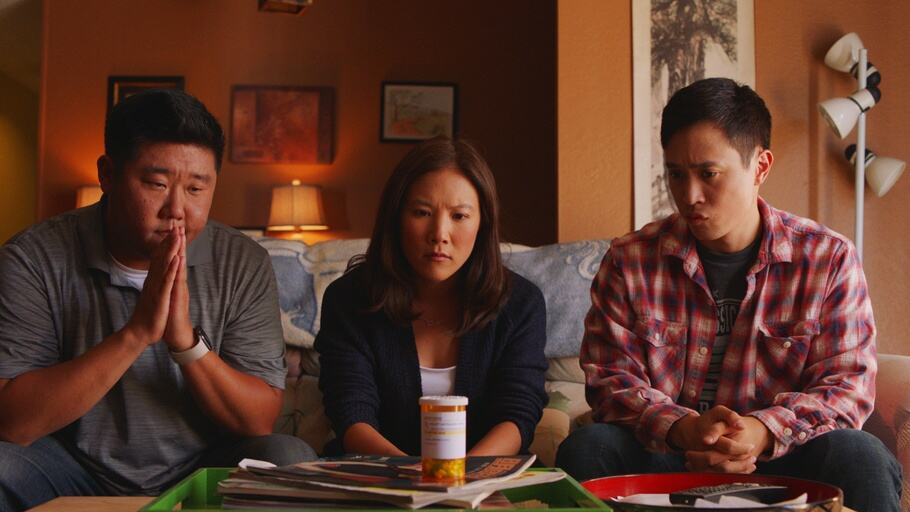Coupling is difficult and relationships are difficult. That would be the basic premise of pretty much any romantic comedy or drama ever. Santa Yamagishi's second feature “To the Supreme!”, based on a stage play by Shuko Nemoto, is not different in that department, as we get to see four couples or almost couples struggling with their love life on almost day-to-day basis in two different timelines.
To The Supreme is screening at Nippon Connection

Atsuko Maeda plays the nerdy costume designer Machiko who starts a relationship with her high school friend Reito (Fuma Kikuchi) who presents himself as an influencer, but is actually a parasite. Former child actress Suzu (Shuri) lives with her gay roommate Tommy (Yudai Chiba) after giving up hope to return to her job and harbors certain feelings for him which he prefers not to notice. Miwa (Marika Ito) is a freelancer whose pregnancy scare turns to be cancer, while her otherwise loudmouth boyfriend Taizo (Reiji Okamoto) keeps silent about paying his part of the rent and trying to dodge any responsibility whatsoever. Finally, we have sex worker Nanase (Mei Kurokawa) and her steady client, also a child actor Shintaro (Takahiro Miura) who is now relegated to working as an extra on sets, which is a blow to his ego.
Check also this interview
After the exposition set in the early-pandemic time of March 2020, the plot jumps two years backwards. We still have the same eight people, but they are coupled differently. We might have sensed it from the previous dialogues, but here it goes. Machiko and Tommy are roommates, and she hopes for more. Two former child actors Suzu and Shintaro live together and struggle to rekindle their careers. Reito parasites off Miwa and at Miwa's, while Taizo got Nanase pregnant and urges her to have an abortion, albeit she does not want any commitment of him. Long story short, the women are doing their best while men are useless at best and abusive at worst: patriarchal, parasitic, egomaniacs or irresponsible selfish pricks. The plot keeps jumping back and forth between the two timelines all the way to the unearned, fantastic (happy) ending.
The dialogues as the driving force clearly signal the stage origins of the film. It could be also observed from the fact that it is predominantly set indoors, in four apartments that might as well be integral parts of the same studio, which also might be a give-away that “To the Supreme!” is an example of Covid-times filming. The pandemic also makes up for a minor plot-point in the film.
Working with a script that is a bit on the clever side, especially by the way it weaves the hints into the dialogue fabric, Santa Yamagishi proves to be serviceable as a director who can forge a comprehensible language by opting for static takes for as long as it takes (until being forced to introduce reverse shots), as well as opting for predictable, yet still effective editing tricks of matching the end of a scene with the opening of the next with the shots composed the same way. The camerawork by the cinematographer Yuki Nakamura is also decent, although the lighting contrasts can sometimes be too striking.
It all works nicely in the first half of the film, until the stakes are risen to prove a point. The biggest victim of it is acting: as the anticipated climax approaches, its expressiveness tends to get a bit over the top. It is not the ensemble's fault, mind you, as the actors have already proved that they can play their roles in a controlled way in the earlier, calmer scenes, but Yamagishi's, since his instructions are not as precise and measured later on.
In the end, “To the Supreme!” lands in the realm of mediocre, although it showed some potential to be better. Not exactly revolutionary in the terms of genre of romantic drama, but still…















